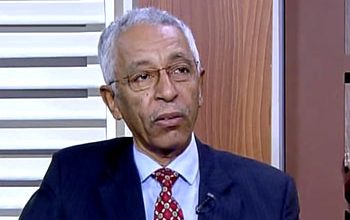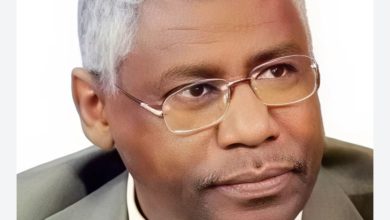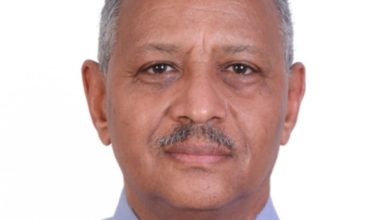Leadership of the Samood Alliance — Makers of the April 15, 2023 War

By Othman Jalal
(1)
It is well known that the Armed Forces and the Rapid Support Forces (RSF) carried out the corrective movement on October 25, 2021, removing the “Qaht/Progress/Samood” alliance from its unilateral dominance over the transitional period. In the theory of revolutions, when a single ideology dominates a transitional phase, it tends to engineer political, social, and constitutional structures that result in a new authoritarian regime — much like the Bolshevik and Iranian revolutions. Thus, transitional phases should either be neutral or consensual, without involving identity-based or ideological issues that cause vertical divisions within society. The deviants of the Samood alliance delved into all identity-based issues, even championing the rights of homosexuals and deviants, leading to a split within the conservative Sudanese society, almost causing an identity-based societal collapse.
(2)
In order to complete the corrective movement and calm the false revolutionary fervor, General Al-Burhan announced the military and RSF’s withdrawal from the political process, supported by Hemeti, who further reinforced this with positive declarations about initiating the integration of the RSF and building a unified, professional, and national military institution. Al-Burhan and Hemeti called upon political forces to agree on managing the parameters and tasks of the transitional phase. This rational proposal should have been the foundation for building the pillars of consensual democracy. However, what did the “Progress/Samood” alliance do?
The leaders of this alliance realized they had lost popular support, revolutionary inspiration, and educational credibility, with no path back to power except through armed force and external leverage. Thus, they introduced the Framework Agreement of December 2022 — manufactured by foreign entities hostile to Sudan — and sought to selectively garner support for it rather than build a critical historic bloc. They thereby deepened the rifts within the national political community and hastily attempted to reintroduce the military component into the political scene. When the army leadership realized that such an initiative would reproduce the revolutionary crisis, they distanced themselves from involving the military in such a partnership. Instead, they reiterated the need for achieving consensus and agreement among all political forces and even expressed their willingness for all political and military leaders who had emerged post-December 2019 revolution to step down, to be replaced by new leadership enjoying national and popular consensus.
(3)
Yet, what did the Progress/Samood leaders do? They rushed to recruit the RSF’s leader, granting him, through the Framework Agreement, political, economic, and structural privileges, including independence from integration into the armed forces for a period ranging from ten to twenty years. They also worked to rehabilitate and market Hemeti regionally and internationally.
In revolutionary democratic theory, militias such as the RSF — the worst remnants of the former regime and a strategic threat to national and democratic construction and social peace — should have been dismantled before the protesters even left the sit-in squares.
(4)
When the army leadership realized the dangers of polarization between the army and the RSF, it initially signed the Framework Agreement but insisted on gathering the largest possible consensus around it to end the acute political fluidity. However, what did the Samood alliance leadership do? They described the rallying of political forces around the Framework Agreement as political “drowning” and made a grave mistake by promoting slogans that inflamed sedition between the army and the RSF, such as “Either the Framework Agreement or war,” “The RSF is the nucleus of the new Sudanese army,” and “The RSF enjoys societal support and regional and international relations that grant it legitimacy as an organization and political actor.”
In light of this sharp polarization, the national political scene split into two camps: the first with the army, honorable political forces, and society; the second with the Qaht/Samood alliance, the RSF, and the evil regional and international coalition.
What tools and means did each side adopt to implement its vision of the political crisis? The Sudanese army and its allies adopted the strategy of dialogue and consensus. The army even reduced its alert level to 30% on Thursday after Hemeti — the traitor and criminal — assured them there would be no clash with the army. General Al-Burhan also ordered an investigation into the first skirmish at the Sports City before the RSF’s full-scale attack on the Command Center and military units.
In contrast, the dishonorable Qaht/Samood alliance did not raise the slogan “Either the Framework or a corrective popular revolution,” having lost the confidence of the revolutionary base. Instead, they sought to achieve a civilian authoritarian regime protected by Hemeti’s guns and Mohammed bin Zayed’s money. Hence, they adopted the slogan “Either the Framework or war,” despite being weaker, more disgraceful, and fewer in number, as Amr ibn Salim Al-Khuza’i once described Quraysh’s secret aid to the Banu Bakr tribe against the Muslims’ allies, Banu Khuza’a.
(5)
The Samood leadership may claim that they raised this slogan to warn against war, but the duty of civilian political forces is to rationalize and civilize political action, not to threaten with war and violence.
The Samood leadership might also claim that the RSF leadership launched the war independently and without their consent. However, have the Samood leaders severed their alliance with Hemeti and declared their support for the army and the people in this existential war for the Sudanese state?
Nothing makes sense if it needs proof as clear as daylight. The Samood leaders’ alignment with the criminal militia is evident to everyone, even a shepherd in the wilderness. Indeed, Hemeti would not have dared to wage war against the army, the people, and the state without the blessing of the Samood leadership.
Thus, the Samood alliance’s narrative of neutrality in the current war is a cover for its strategic alliance with the RSF. Their slogan “No to war” is a hypocritical attempt to save their ally from military destruction and reintroduce him into the political scene via a political settlement that would empower them again to dominate the transitional and electoral stages. This is the most dangerous possible end to the war, as it would allow this wicked alliance to regroup and resume an even fiercer war against the army and the people, aiming to seize the Sudanese state through a comprador alliance — the agents of neo-colonialism represented by the Daqlo militia and the Samood coalition.
Thus, the current battle resembles a zero-sum game in administrative statistics theory, where one side’s gain is the other side’s loss.
Therefore, this battle must end with the complete military, political, and economic destruction of the Daqlo terrorist militia, preventing its regeneration to safeguard national unity, prevent a slide into civil war, and save the national democratic project from hijacking and foreign subjugation.



